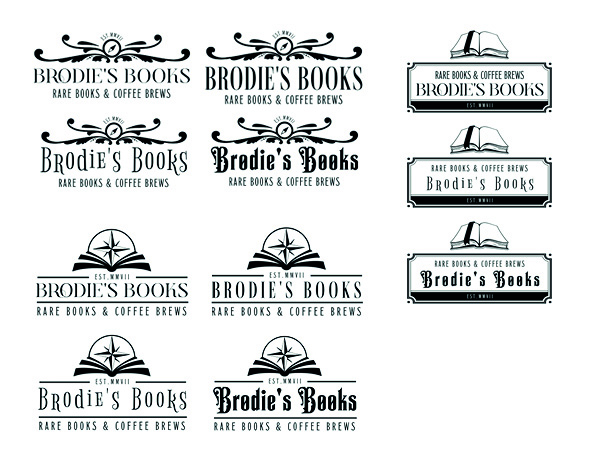BUILDING A BRAND
Part 1
Brief: This is the start of your strategic planning and research. Using knowledge about the course assignment, answer the questions with the specific brief in mind.
Who and what are Brodie's Books?
Brodie’s Books is an online book shop run by Isla Stewart and Njabulo Dlova, from Edinburgh, Scotland, for the past fifteen years. The business specifically focuses on rare, collectable second-hand books.
Recently, they purchased an old bar located in the well-known Royal Mile section of the city centre, which they plan to convert into a space for their bookshop. They have visions to furnish the shop with unique and interesting items from thrift stores, and to devote a section of the space to operate as a coffee bar.
What are Brodie's Books' unique selling point?
Brodie’s Books sell rare, collectable second-hand books – a luxury, high-end product. In addition to this, they have a physical booth each year at the Edinburgh Fringe Festival to not only promote their books, but to sell their custom coffee brew – a recently developed passion project.
Who is Brodie's Books' target market?
Book-lovers, book collectors, tourists, coffee-drinkers.
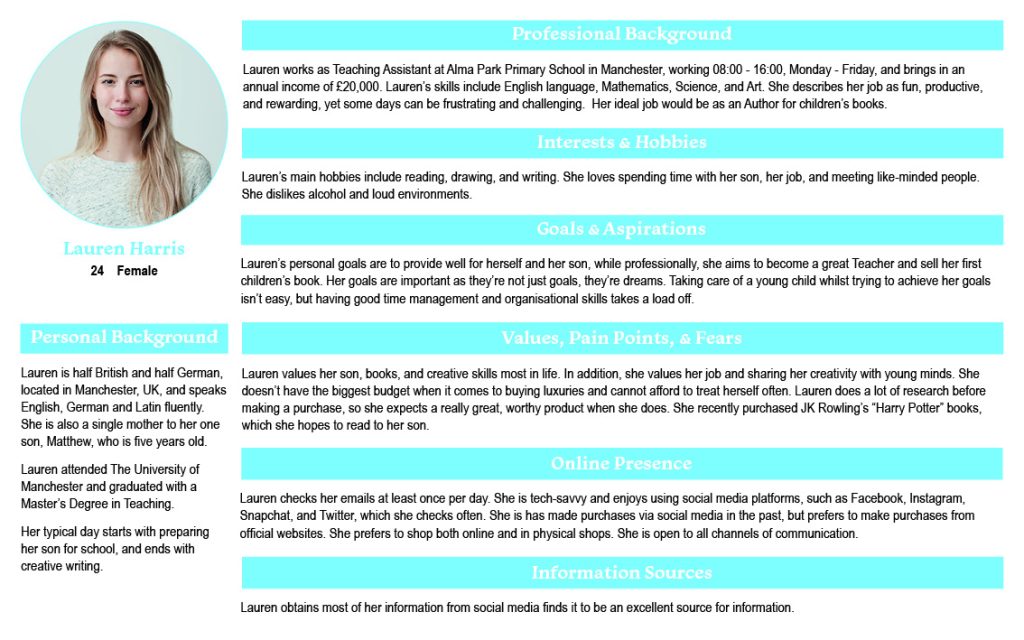
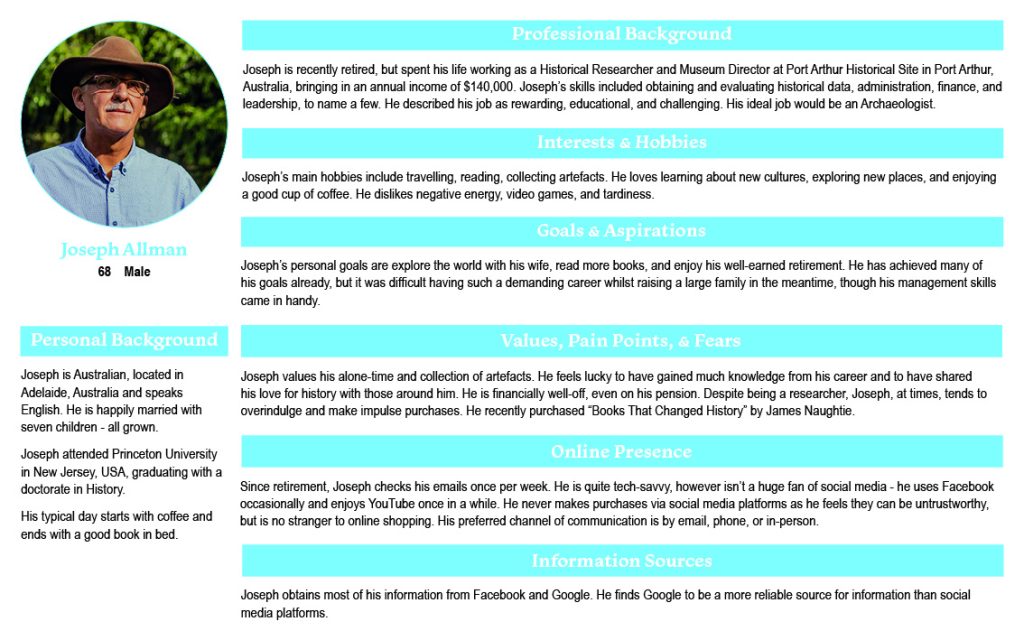
Who are Brodie's Books' competitors?
1. Book Depository is a UK-based online book shop founded in 2004. They have a large catalogue, offering free shipping to over 160 countries. They aim to make “all books available to all” by improving selection, access, and availability.
2. ABAA (Antiquian Booksellers Association of America), founded in 1949, promotes interest in rare and antiquarian books and book collecting, striving to maintain the highest standards in the trade, and giving their members the ability to sell, buy, and appraise books. They encourage the collecting and preservation of rare and antiquarian books and related materials, to support educational programs and research into the study of rare books.
3. AbeBooks is a e-commerce global online marketplace, launched in 1996, that offer books, fine art, and collectables. It specialises in used, high-end, rare, and out-of-print books.
What goal does the client want to achieve?
The client’s goal is to expand their online business with the addition of a physical shop in their home city, as well as expand the brand by changing and enhancing the nature of their business. They want to build a community around their up and coming book shop by devoting a part of it to operate as a coffee bar to sell their custom-made coffee, making the business unique and to stand out from their competitors. They also want to distrubute their coffee to local restaurants and make deliveries within the city centre. In addition to this, the client wants to offer their customers a premium service for the books to be packaged in a unique gift packaging.
How am I going to achieve the client's goal?
I am going to help the client achieve their goal by designing a new brand identity for them – this includes a new logo, typography, colour scheme, and overall visual style, as well as applying the new logo to various items. I will also be branding their delivery vehicles by applying the logo to the van and bicycle, designing a new packaging for their coffee, ‘Brodie’s Brew’, and creating a concept for a custom gift packaging for their books.
Part 2
Brand Positioning Statement
Brief: Create a brand positioning statement for Brodie’s Books using the following template:
To (insert target market), Brodie’s Books is (differentiating benefit for target market) by (how Brodie’s Books is going to make it possible).
I came up with a few ideas for a brand positioning statement for Brodie’s Books, keeping in mind the target market, the benefit for the target market, and how the brand can make that benefit possible. I thought about the unique benefits that the business can offer to consumers and what makes them, as a brand stand, out from their competitors.
From my four ideas, I picked “To adventurous book-lovers, Brodie’s Books is taking you to another world by providing rare and unique books.” I chose this as the brand positioning statement as I feel it speaks to consumers who are looking beyond easy-to-find, common and general books, and will provide a service that their competitors cannot challenge.
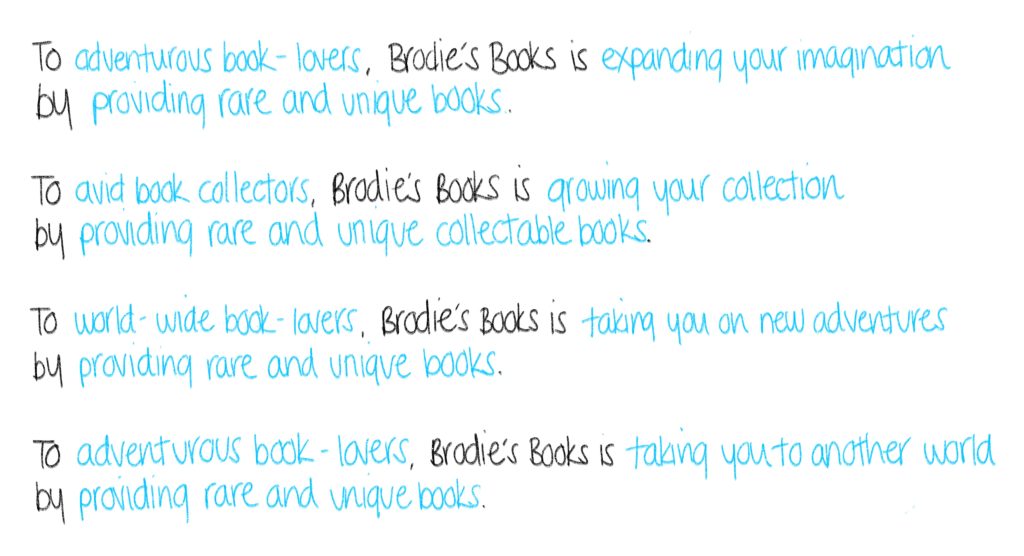
Brand Personality
Brief: Create a personality for Brodie’s Books. It’s up to you how you want to figure this out: you can use brand archetypes or simply attribute things to your brand to form some kind of personality.
In order to create a personality for the Brodie’s Books, I used brand archetypes.
I used a brand archetype wheel to determine which type of personality is most relevant to the brand and took note of those which could define the brand. I then wrote down some important questions to keep in mind while choosing an archetype, and finally, noted down some key aspects of the brand to help me figure it all out.
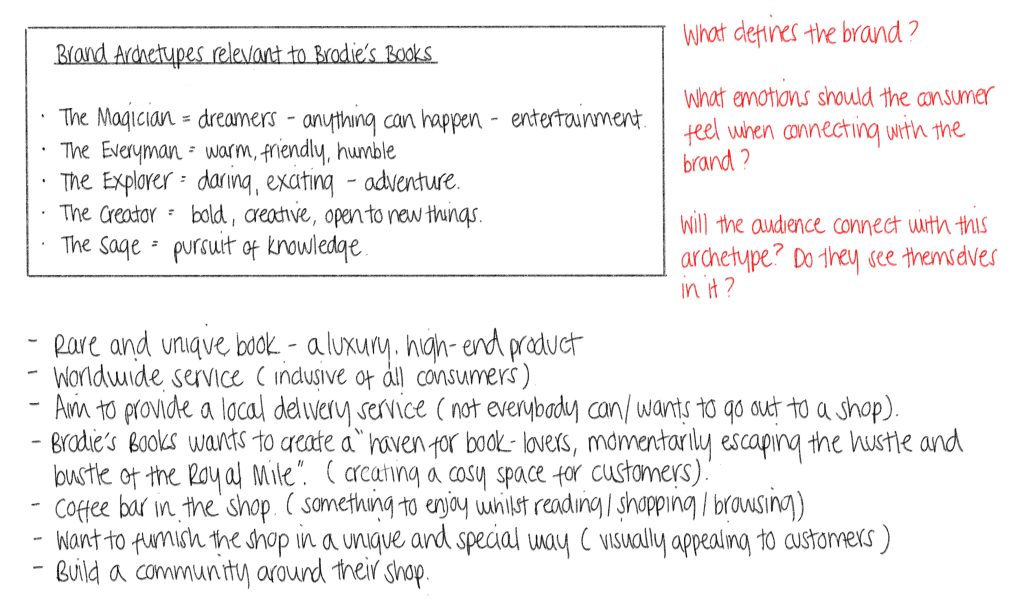
Following my notes, I felt that Brodie’s Books could be a combination of archetypes; The Everyman and The Creator. However, I am leaning more towards The Everyman being an archetype that would better define the brand. Brodie’s Books provides rare products and unique services to their customers, which makes them dedicated and trustworthy. They are inclusive and considerate of consumer needs. They aim to create a unique and cosy space for customers to enjoy their products outside of the home, which gives the brand an inviting, warm, and friendly feel.
I tried to think of the brand as a person: Would the audience want to befriend this person? Would they feel safe with this person? The consumer would feel safe and secure in knowing that they can count on Brodie’s Books to carry out the services that have been promised to them. They would be welcomed with a friendly and humble approach, and feel like they can “make themselves at home” and be who they want to be with the brand.
I feel that the target market would absolutely connect with this archetype – it is like-minded and approachable, and open to all cultures, backgrounds, and ages. I feel that consumers would be able to see parts of their own personalities within the brand and connect well with it.
Mood Board
Brief: Create a mood board for Brodie’s Books by specifically looking at the visual elements below. This mood board is going to guide you in a stylistic direction before you even start with the logo design.
Find visual inspiration for all the following elements of the brand:
- Typography
- Colour Palette
- Pattern and Texture
- Supporting Visuals
I created a mood board for Brodie’s Books in order to guide me in a stylistic direction before starting with designing the brand logo. I took note of keywords, such as; rare, unique, antique, vintage, and books (to name a few). I have included visual inspiration for typography, colour palette, pattern and texture, and supporting visuals within my mood board.
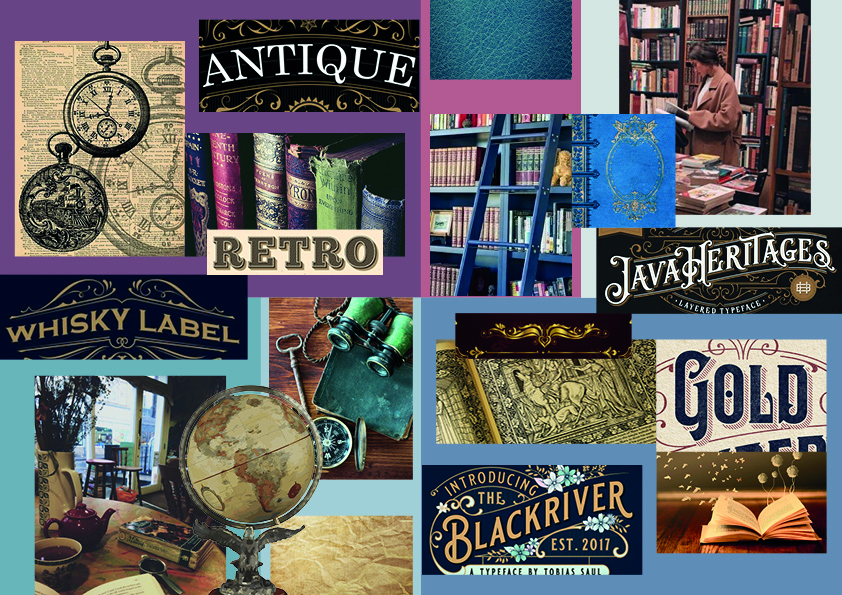
Part 3
Brief: You need to start with the logo design process. You’ll only focus on ideas and rough sketches for this part. For this, you need to generate ideas and sketch visual ideas for the Brodie’s Books logo.
Generating Ideas
In order to generate ideas for the Brodie’s Books logo, I created a mind map. This includes ideas for brand colours, typography, types of visuals, and patterns and textures that could be included, elements that could be implemented into my sketches, and where to logo could or is going to be used. In addition, I included some key words that I feel describe the brand.
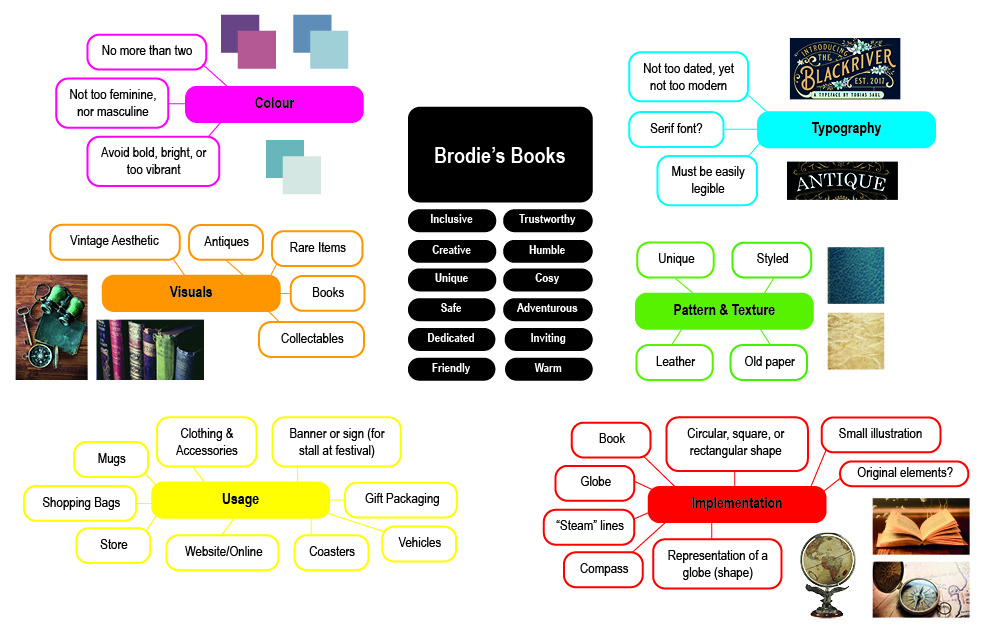
Visual Ideas - Sketches
Using the mind map I had created, as well as my mood board, I created several sketches for the new Brodie’s Books logo. I played around with different layouts, shapes, and illustrations – just anything that came to mind that made sense. In addition to this, I have included some sketches of possible typography options.
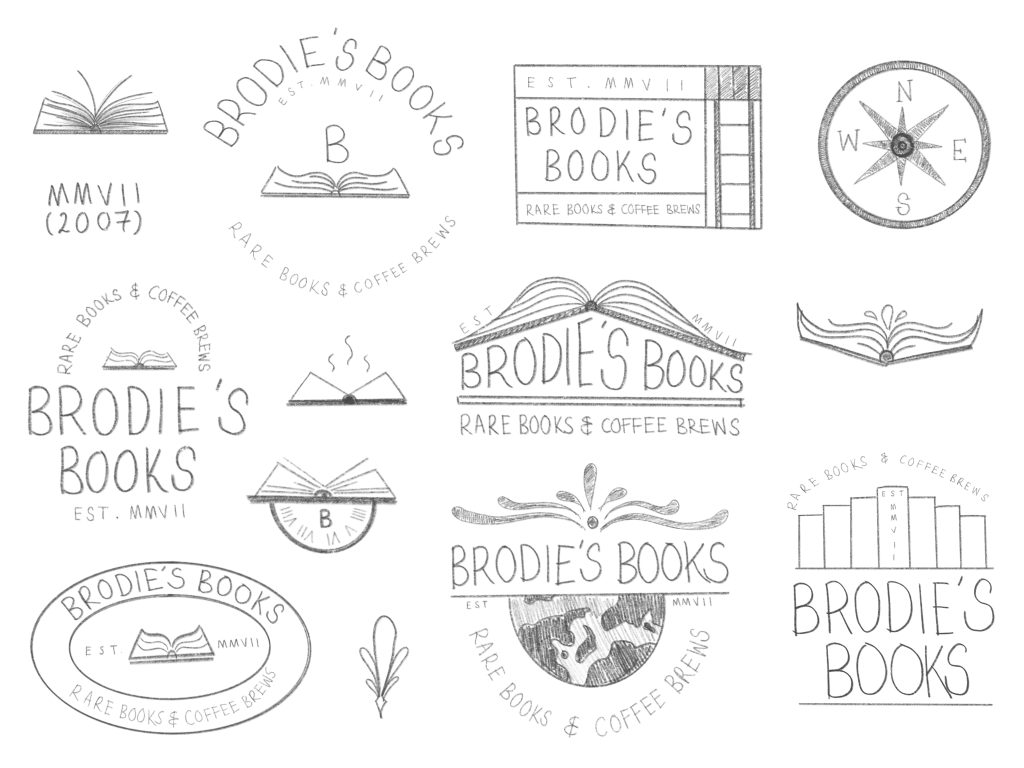
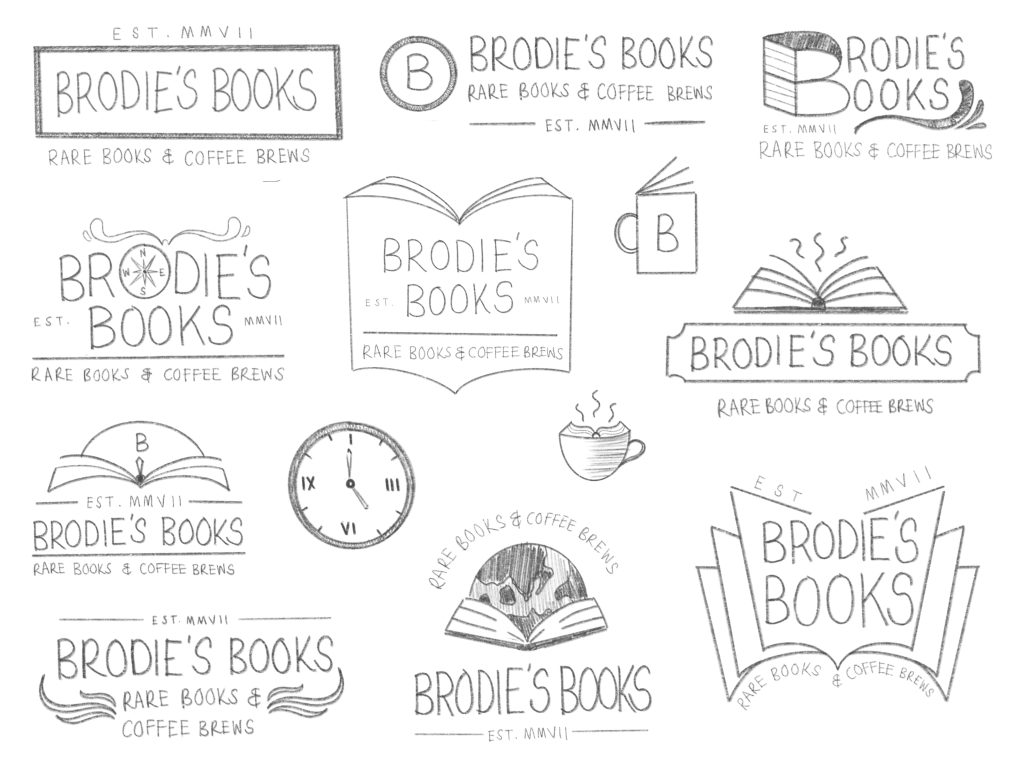
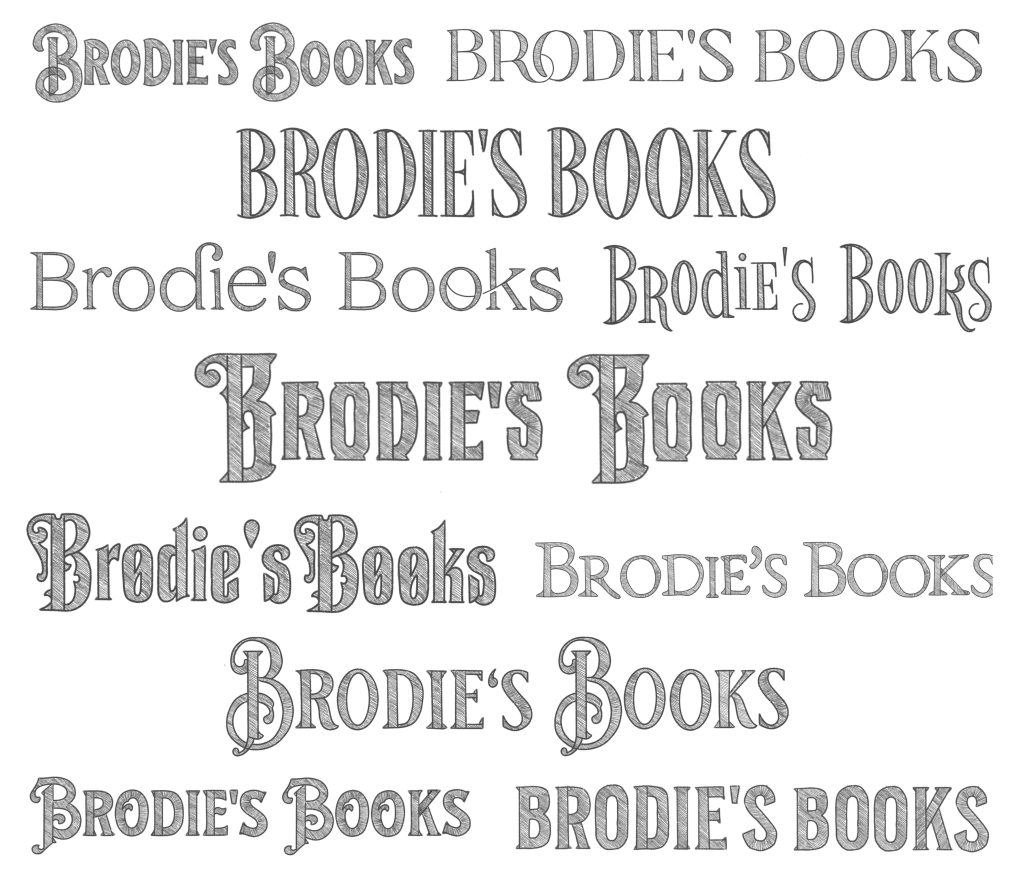
Part 4
Brief: You need to go through the elimination process and decide which of your ideas is worth vectorising.
Elimination Process
Now that I had lots of rough sketches for the Brodie’s Book logo, I needed to eliminate the sketches that I felt were the weakest of my designs. This was a difficult process, but I managed to decided on nine of my designs out of the seventeen I had drawn, as well as seven of the eleven typography options.
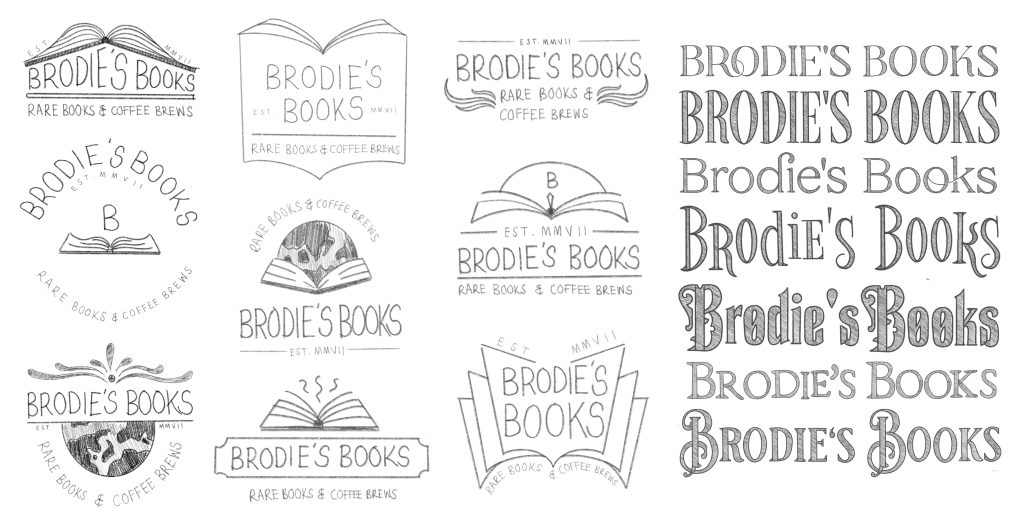
Following the elimination process, I needed to materialise my designs by pair my visual sketches with my font sketches. I did this digitally as it was a lot faster than re-sketching everything. These were still just rough designs to see which sketches had potential and which did not. I created seven sets in total as at this point I had eliminated a further two sketches.
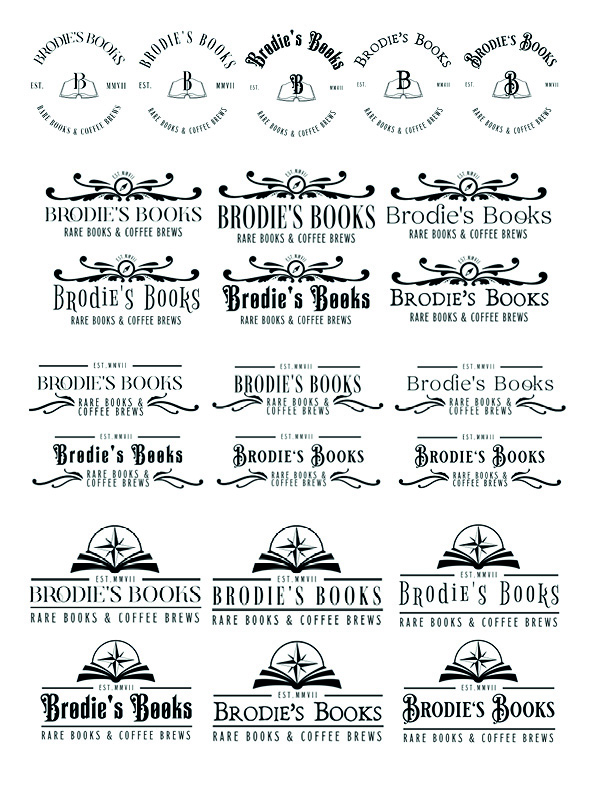
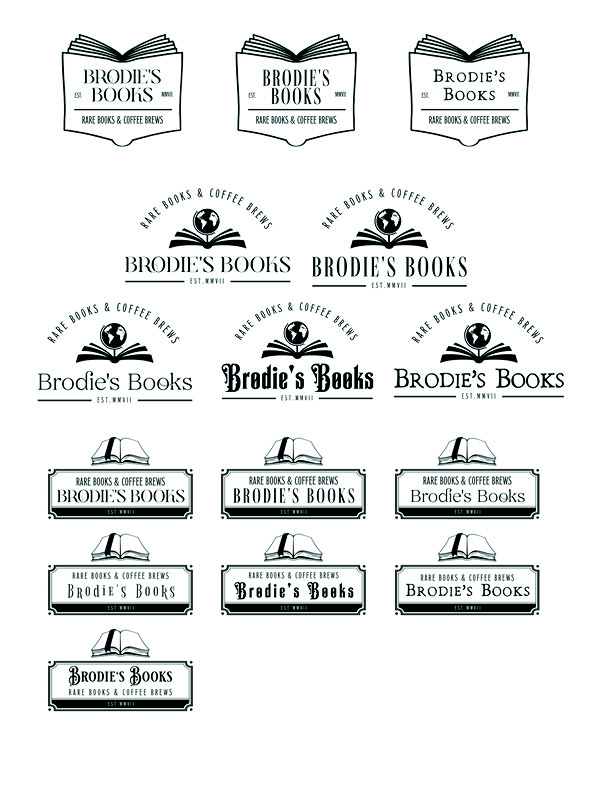
After materialising my chosen sketches, I had a much clearer idea of which designs could potentially be the new Brodie’s Books logo. I thought carefully about each design before going through the second elimination process in order to choose my strongest designs for the Brodie’s Books logo. Again, this was quite a difficult process as there were so many that had great potential, but I had to keep in mind which logo design would work best on different size scales and how the logo was going to be used by Brodie’s Books.
